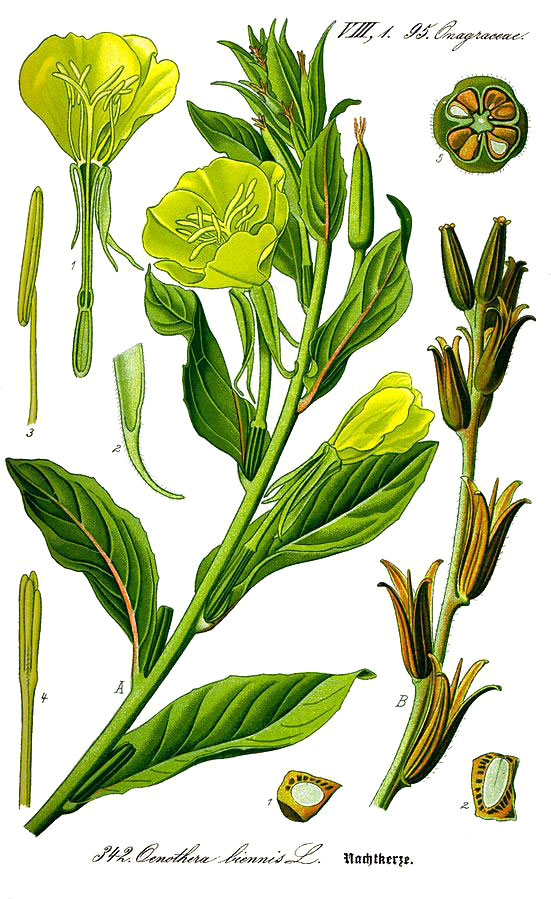Evening Primrose

Origin: North America
Family: Onagraceae
Scientific Name: Oenothera biennis
Folk Names: Evening star, King’s cure all, night light, night willow herb, scabish
Magical
Element: Water
Day: Monday
Planet: Neptune
Zodiac: Pisces
Deities: Diana
Magical Properties: Beauty, success, friendship, truth, transition, health, binding, intuition
Aromatherapy
Part Used: Seeds
Extraction Method: Cold-pressing or solvent extraction
Flash Point: 270°C
Perfume Use: Base oil
Shelf Life: 6 months
Scent Description: Sweet, slightly nutty
Active Constituents: High in linoleic
Topical Uses
Skin Types: Dry/combination
Absorption Rate: Fast
Viscosity: Light/medium
Properties: Softening and deeply soothing to irritated and inflamed skin; regenerative skincare, mature aging skin, psoriasis and eczema, anti-inflammatory, very healing.
Practical
Virtually all parts of the plants are edible:
- The roots can be eaten raw, or cooked like potatoes;
- The stems can be used while they’re still young in June: after peeling, they can be eaten raw or fried;
- Leaves can be used from April to June, eaten raw in salads or cooked like spinach;
- The flower buds can be harvested from June to September. They are mild in taste and can be eaten raw in salads, pickled in oil, fried or in soups;
- The flowers have a slightly sweet taste and can be used as a garnish for salads or desserts;
- The oil from the seeds is widely sold as a dietary supplement due to its high gamma-linolenic acid (GLA) content.
Indigenous Uses:
- Indigenous tribes in North America (namely the Cherokee, Iroquois, Ojibwe and Potawatomi) were using the plant as food and medicinal crop for hundreds of years.
Beauty
- Very moisturising
- High in gamma-linolenic acid (GLA) (10%)
- Helps prevent premature skin ageing
Botanical
Evening Primrose refers to the entire genus of Oenothera, which consists of about 145 species.
Type: Biennial flower
Plant size: 30-150cm
Leaves: Lance-shaped leaves 5-20cm long and 1-2.5cm wide. They grow in a tight rosette in the first year, and spirally on the stem in the second year. Flowers over summer.
Flowers: Yellow flowers with four bi-lobed petals, 2.5-5cm in diameter.
Fruit: 2-4cm long capsules containing numerous 1-2mm long seeds.
Etymology: Unrelated to true primroses (Primula spp.), although the flowers can look similar. Named “evening primrose” for the flowers which open visibly quickly every evening and last until the following noon.
